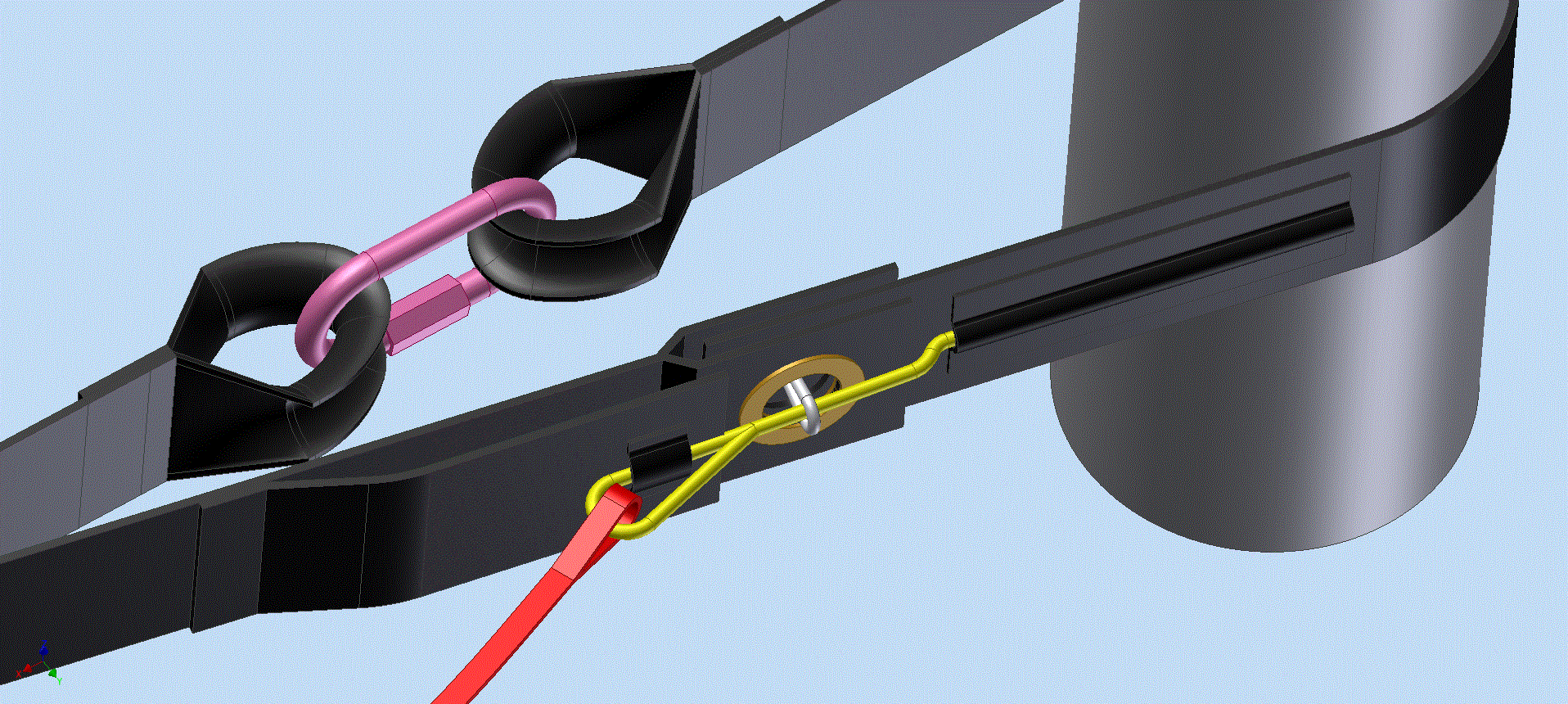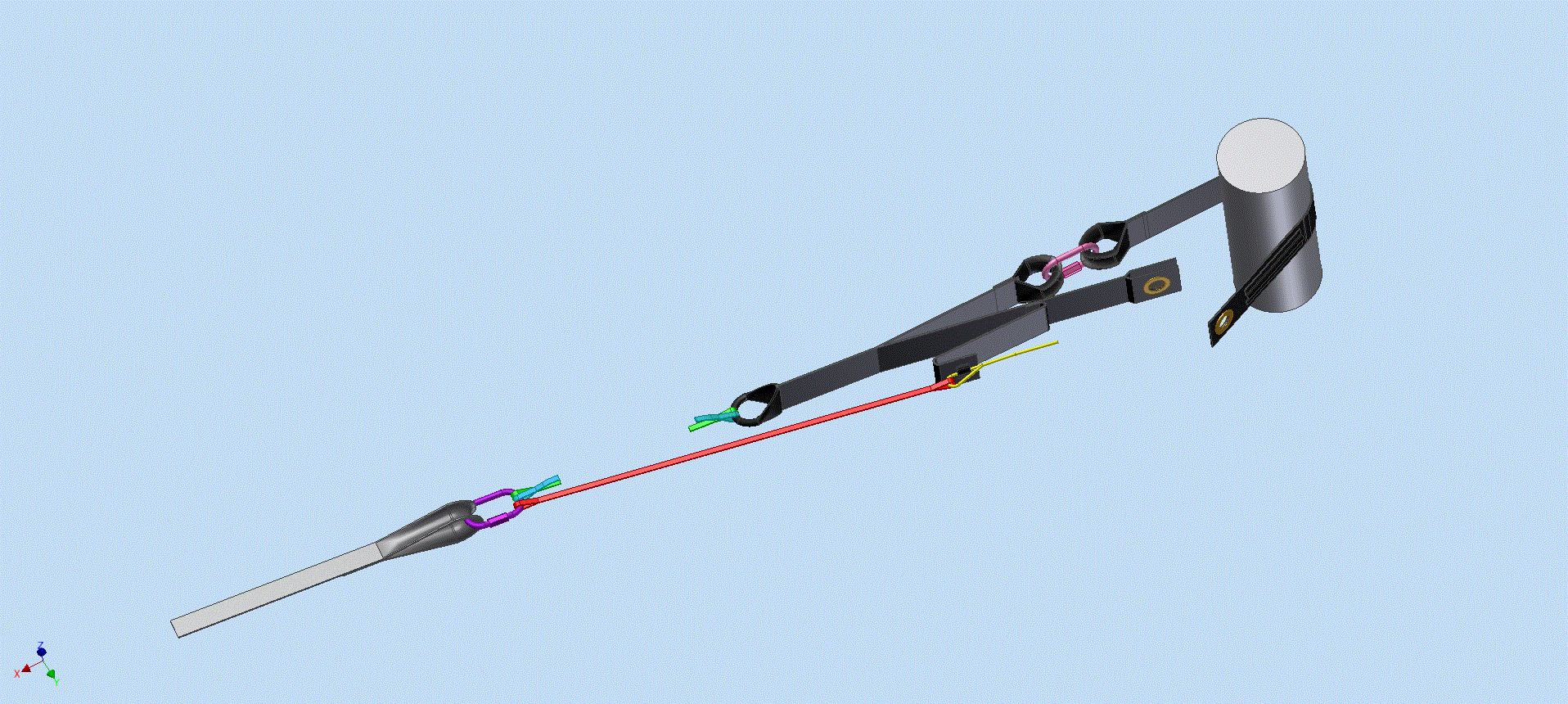Re: [swilson] S/L rigging
swilson wrote:
There are many, many discussions about static line rigging in the forums (especially in Technical), as well as a good article in the Jumping section of the Articles. Search for them, and start reading and thinking.
This reading should be able to clarify what you need to consider, as well as explain to you why it's not such a great idea to tie your static line to the end of the bridle unless it's strictly necessary.
I did come across references to the Apex super bowl tests and people suggesting tying the bridle shorter. My problem with this is introducing a knot to the bridle. It's rated at 1000 lbs, so it would probably not matter, but having a higher anchor point just seems like a better idea to me. Of course, this presents problem of it's own. A dedicated S/L bridle with a proper attachment point would be even better, where a failure at the break cord attachment point before line stretch would still allow the PC to function, but I don't have that. I would however be interested in pictures of one (I've seen the dacron version in the articles and also something on a regular type 4 webbing bridle that looked like a dive loop).
swilson wrote:
As a side question, whose idea was it to use the Rapide link to connect the pilot chute to the bridle? The traditional lark's head knot is used for a reason: it's secure and simple. The Rapide link adds unnecessary weight to your deployment system, and can be a potential snag point, not to mention something else you have to check every time you pack. It's actually much simpler to change pilot chutes with the lark's head than it is to find a wrench to undo the (properly tightened) Rapide link.
A lark's head is not meant for loading the way a break cord loads it. If the lark's head is loaded from the PC, then I agree. The quick link is there to load the bridle evenly on a S/L jump the way a PC would load it during a normal deployment, as well as permitting the PC to work (unless the quick link or the bridle fails).
A break cord tied in through the lark's head might cause friction damage and/or load the bridle webbing unevenly since it's somewhat compressed by the knot. In a previous thread people suggested using a quick link to avoid damage to the bridle, either tied with a loop lower on the bridle or through the lark's head. But instead of doing this, why not skip the lark's head? If the bridle breaks the PC won't work either way. And the drop length can be adjusted by choosing a properly placed anchor on the object.
wwarped wrote:
good?
bad?
Yeah, it might not have been the best choice of words :)
wwarped wrote:
the static line is the primary deployment method.
the pc is the back-up deployment method.
both are now dependent on the rapide link. you are introducing an additional single point of failure and thus adding additional risk.
True, but a bridle failure at the lark's head knot would yield the same results. Of course, now we can face both bridle failure and failure of the quick link but the overall strength should be higher unless it's rigged improperly. The risk of that happening is also a bit higher since the system is more complex, but only marginally.
wwarped wrote:
the anchor point is also at the end of the bridle, thus you must travel farther before activating your parachute. if you want to open as high as possible, that can be bad. again, much is object dependent. I thought the Apex folks tested s/l setups and discovered the odds of premature breakage increase with effective bridle length.
Yes, I've seen references to this in previous posts. It would be interesting to see some numbers and a description of their setup. I havn't found this. If the anchor point was at the level of the jumper's feet and they then concluded that a bridle with the effective length of 7' made the premature breaking problems less, this would still be a longer drop than a 9' bridle anchored to the object at the level of the jumper's waist.
The weakest point in the system is of course the break cord, and the possibility of premature breakage is lowered by having as little slack as possible. The second weakest point should be the bridle, unless the quick link is open or w/e, and it's pretty damn strong.
I posted this here to get feedback, and I appreciate what has been written. It's always better to go with the methods used and thoroughly tested with time than trying to reinvent the wheel, so maybe I'll do that. However, I do see a potential problem with a bridle loaded the way it is in a traditional S/L setup with the break cord tied through the lark's head knot.
Anyone noted bridle wear during S/L jumps? Got pictures?







 That hurt like hell, didn't break anything, it just HURT like hell.
That hurt like hell, didn't break anything, it just HURT like hell.  Thanks for sharing!
Thanks for sharing! 








